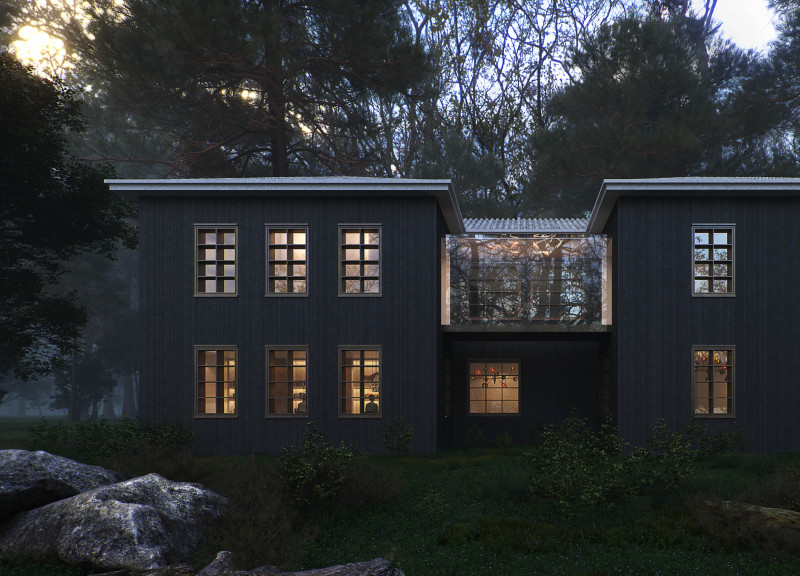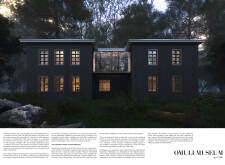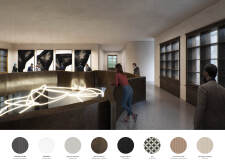5 key facts about this project
The Omuli Museum project aims to repurpose the historic Omuli Primary School, located in the village of Omuli, Northern Latvia. Originally built in 1936, this school is becoming a museum focused on local horse breeds and equestrian culture. The design concept emphasizes maintaining the building’s original shape while incorporating modern features that enhance visitor interaction and overall functionality.
Architectural Concept
The main concept centers on preserving the heritage of the original structure while adding contemporary features. The design reconfigures the layout from a traditional square shape to a more fluid arrangement. This change encourages better visitor movement throughout the museum and reflects the active nature of equestrian events, allowing guests to engage more deeply with the exhibits and performances.
Design Modifications
Several modifications are made to update the facility and improve its visual appeal. A dark concrete strip adds contrast to the existing architecture, serving as a focal point that draws attention. Solutions like a glass bridge on the second floor enhance openness and connection between different areas of the museum. Solar panels on the roof represent a practical commitment to sustainability and environmental care.
Functional Spaces
Different kinds of spaces are included in the museum, such as communal areas and artist studios. These spaces support a range of activities, making the museum a community center for both artists and visitors. The design focuses on flexibility, allowing spaces to serve various purposes and promoting creative interactions among users.
Design Details
Materials are carefully chosen to support the museum's theme. Venetian painting represents the texture of horse skin, while metal symbolizes horseshoes. These elements provide a visual and tactile connection to the equestrian focus. Inside, the “WOW” area features patterned tiles and customized lighting, which creates an engaging atmosphere aimed at captivating visitors and enriching their experience of the museum's cultural offerings.






















































